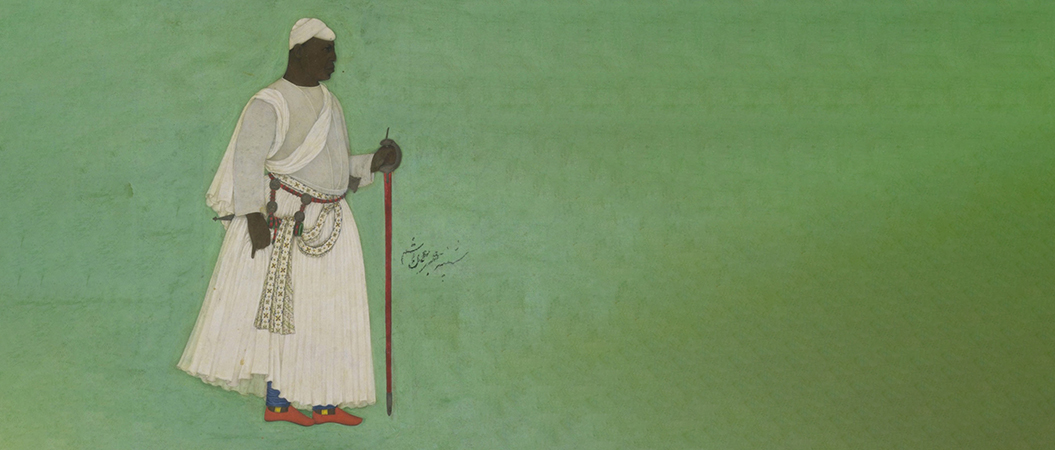The story of Malik Ambar
Born in 1548, a captured Ethiopian herdsman is sold as a slave in Yemen, taken to Baghdad and from there to present day India, Malik Ambar not only raised his own armies, but casually replaced kings when they became annoying. A remarkable true story that is not nearly as well-known as it should be.
By the time the Oromo tribe arrived in what is today Ethiopia, the Abyssinian Empire ruled the area for over two and a half centuries. The Empire ruled vast parts of North East Africa, trading with neighbours and subduing tribes.
The Oromo, a peaceful group of herders, were not native to the land and arrived from war torn areas on the Empire’s periphery. They did not share either of the two dominant religions of the new territory into which they migrated, Islam and Solomonic Christianity – their beliefs being ancient and animist.
In 1548, the boychild Chapu was born. Accounts vary, with some asserting that he was taken as a slave in one of the commonplace raids, while others maintain that his own parents sold him. Either way, he was taken and made a slave.
He was taken from the highlands of Central Ethiopia and transported by ship to the Port of Mocha in Yemen for 20 ducats to a middleman. The Port of Mocha was a common trading partner of the Abyssinian Empire, and the port there was well stocked with ivory, musk, and slaves – bound for the East. The middleman transported him by caravan to Baghdad, a centre of culture and learning at the time. There he was sold to another middleman, who sold him to Kassim.
Once Chapu converted to Islam, Kassim educated the young slave and was impressed with his intelligence, giving him the name Ambar, which means ‘the intelligent one’. He became versed in languages, sciences and warfare.
Kassim knew that Ambar would be worth far more as an educated slave, and so he spent several years developing the young Ambar. Once he was ready, Kassim took Ambar by boat to the Ahmadnagar Sultanate, a relatively prosperous state in India’s Deccan Plateau, to sell him there.
He was sold to Chengiz, himself a former slave and now a Minister in the Royal Court of Ahmadnagar’s ruler, Babir. India at the time was a divided place, full of intrigues and bloody uprisings. There were 5 kingdoms on the Deccan Plateau – Berar, Bahmani, Bijapur, Golconda and Ahmadnagar. To the North was an increasingly aggressive Moghul Empire, constantly encroaching on the lands to the South, taking slaves and subduing local populations.
In 1576, during a violent succession dispute, Chengiz was killed as Babir was deposed. In Chengiz’ will, he made his slave Ambar a free man.
Ambar left and moved South to the Sultanate of Bijapur, where he started a mercenary army with 150 cavalrymen. Between 1576 and 1595, he hired himself and his party out to Bijapur and Golconda, settling local disputes and uprisings. It was during this time that he was given the name Malik as well, and he became widely known as Malik Ambar.
He met a young woman named Karima and married her – together they had four children. In 1595, renewed Moghul aggression saw the Empire take parts of the Ahmadnagar Sultanate for itself. Malik Ambar saw this an opportunity, coming to the aide of Queen Bibi and fanning popular anger against the Moghuls. Malik Ambar’s cause proved popular, his ranks grew to about 7000 strong.
In 1597, when the Moghul Empire finally got rid of Queen Bibi, Malik, ever more popular, handpicked a prince and installed him on the throne. He immediately married his daughter to the prince, thereby entrenching his power. He was the real king, in all but name.
By 1605 Malik managed to unite the Deccan Kingdoms against the Moghul, leading several raids against them. By 1610 he drove the Moghuls out of the area and reclaimed land they had taken. By now, his army was 50,000 strong. He was renowned as a strategist, using hit and run tactics and outflanking the Moghul regulars with his light cavalry.
He built his own city, called Khirki, which many contemporaries described as a beautiful city with many palaces, fountains and gardens.
There Malik settled in, implementing working water pipes and overseeing the population, which rapidly grew to about 200,000 people.
In 1610, the Prince he had installed as King, made a mistake. Spurred on by his second wife, a Persian, they side-lined Malik’s daughter and accused her of treachery. Malik simply poisoned them both, and put his daughter’s son, and his own grandson, on the throne. He secured the consent of local nobles by giving them property rights.
When Moghul aggression again began, Malik led the revolt against them. The Moghul Emperor so hated Malik that he commissioned a painting of himself shooting an arrow into Malik’s severed head. But he never got the chance. Despite many battles, Malik was outmanoeuvred only once – in 1616.
In 1617, Bijapur allied themselves with the Moghul – but by 1624 Malik raided deep into the territory of Bijapur as well. In 1626, at age 78, Malik Ambar died peacefully, at home, surrounded by his family, of natural causes.
Here was a slave from Africa who became a scholar, a warrior, a commander and a kingmaker in the very heart of India. He was one of the 12,000 slaves taken to the port of Mocha every year, and one of a small fraction absorbed by the slave buyers and traders in India, Arabia, Persia and China from other sources at the time.
None of those who sold him, or bought him, could have imagined that he would rise to power, maintain that power, and eventually pass away, to be praised by even his arch nemesis, the Emperor of the Moghuls.

